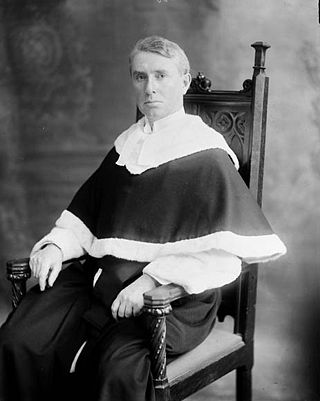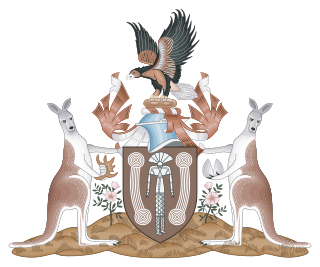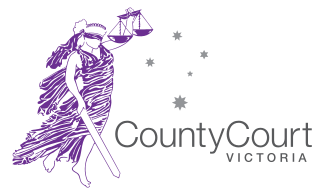
A summary offence or petty offence is a violation in some common law jurisdictions that can be proceeded against summarily, without the right to a jury trial and/or indictment.
The Courts of England and Wales, supported administratively by His Majesty's Courts and Tribunals Service, are the civil and criminal courts responsible for the administration of justice in England and Wales.

A justice of the peace (JP) is a judicial officer of a lower court, elected or appointed by means of a commission to keep the peace. In past centuries the term commissioner of the peace was often used with the same meaning. Depending on the jurisdiction, such justices dispense summary justice or merely deal with local administrative applications in common law jurisdictions. Justices of the peace are appointed or elected from the citizens of the jurisdiction in which they serve, and are usually not required to have any formal legal education in order to qualify for the office. Some jurisdictions have varying forms of training for JPs.

The term magistrate is used in a variety of systems of governments and laws to refer to a civilian officer who administers the law. In ancient Rome, a magistratus was one of the highest ranking government officers, and possessed both judicial and executive powers. In other parts of the world, such as China, magistrate is a word applied to a person responsible for administration over a particular geographic area. Today, in some jurisdictions, a magistrate is a judicial officer who hears cases in a lower court, and typically deals with more minor or preliminary matters. In other jurisdictions, magistrates are typically trained volunteers appointed to deal with criminal and civil matters in their local areas.
Circuit courts are court systems in several common law jurisdictions. It may refer to:

District courts are a category of courts which exists in several nations, some call them "small case court" usually as the lowest level of the hierarchy. These include:

The Supreme Court of the Northern Territory is the superior court for the Australian Territory of the Northern Territory. It has unlimited jurisdiction within the territory in civil matters, and hears the most serious criminal matters. It is around the middle of the Australian court hierarchy.

In England and Wales, a magistrates' court is a lower court which hears matters relating to summary offences and some triable either-way matters. Some civil law issues are also decided here, notably family proceedings. In 2010, there were 320 magistrates' courts in England and Wales; by 2020, a decade later, 164 of those had closed. The jurisdiction of magistrates' courts and rules governing them are set out in the Magistrates' Courts Act 1980.
A Koori Court is a separate division of the Magistrates', County and Children's Courts of Victoria, Australia. The Koori Court (Magistrates), Children's Koori Court, and County Koori Court hear selected cases, where Indigenous Australians have identified as such and requested the case be transferred to it. The first Koori Court was established in Shepparton in 2002. Koori Court aims to reduce recidivism by involving Elders, other respected persons in the Aboriginal community, and court advisors to provide information about the background of the defendant, and to advise on culturally appropriate sentences.

The County Court of Victoria is the intermediate court in the Australian state of Victoria. It is equivalent to district courts in the other states.

The Magistrates Court of South Australia is the lowest level court in the state of South Australia. The Magistrates Court, then known as the Court of Petty Sessions, was established in 1837, by the Court of Sessions Act 1837. It has both original and appellate jurisdiction and hears matters specified in the Magistrates Court Act 1991 (SA).
The Youth Justice Court of the Northern Territory is an Australian court which hears and determines cases concerning crimes committed by children under the age of 18 years in the Northern Territory.
The Court of Summary Jurisdiction is a court in the Northern Territory of Australia. It has jurisdiction to deal with criminal offences which occur in the territory. It is one of the courts that is usually referred to as a magistrates court.
Ian L. Gray AM is a retired Victorian lawyer, and former judge, chief magistrate and State Coroner at the Coroners Court of Victoria.
The Children's Court of Victoria is a statutory court created in Victoria, Australia. The court deals with criminal offences alleged to be committed by children aged between 10 and 17 and with proceedings concerning children under the age of 17 relating to the care and protection of children.
Aboriginal Community Court, or Aboriginal court was the name given to the specialised courts dealing with Indigenous Australian offenders in the state of Western Australia between 2006 and 2015.

The courts of South Africa are the civil and criminal courts responsible for the administration of justice in South Africa. They apply the law of South Africa and are established under the Constitution of South Africa or under Acts of the Parliament of South Africa.

Juvenile detention in the Northern Territory is administered by Territory Families, since a departmental reorganisation following the Labor victory at the August 2016 Northern Territory general election. Juvenile detention is mostly operated through two facilities - the Alice Springs Juvenile Holding Centre in Alice Springs, and the Don Dale Juvenile Detention Centre in eastern Darwin. These had previously been administered by the Department of Correctional Services. A juvenile is a child between the age of 10 and 17.
In the Australian legal system, a good behaviour bond is a type of non-custodial sentence which involves the condition of the offender's "good behaviour" for a set period. The condition of "good behaviour" primarily requires the offender to obey the law, but may also include additional probation officer supervision, mandatory medical treatment or participation in rehabilitation, counselling and intervention programs. These imposed conditions are determined by state legislation and at the magistrate's discretion. A good behaviour bond may be established with or without a recorded legal conviction for the offence. The specific conditions which constitute a good behaviour bond, as well as the consequences for breaching them, vary under each Australian state or territory's legislation, but overall are used most commonly for first-time and juvenile offenders.
The Nunga Court, also known as Aboriginal Sentencing Court, is a type of specialist community court for sentencing Aboriginal people in South Australia. Such courts exist at several locations throughout the state, as a sentencing option for eligible Aboriginal and Torres Strait Islander offenders who plead guilty of an offence.











